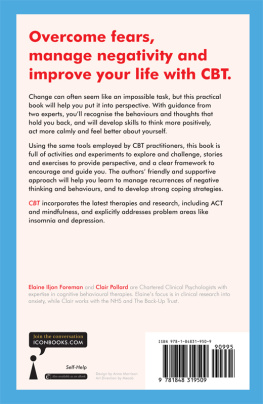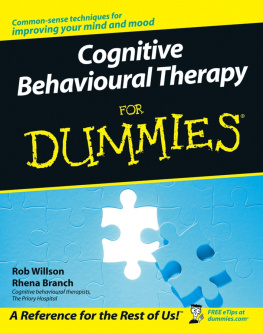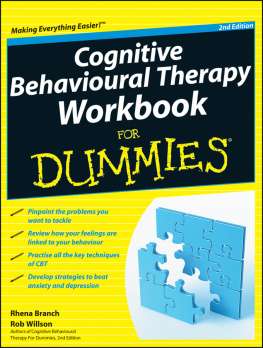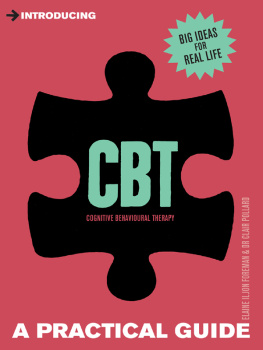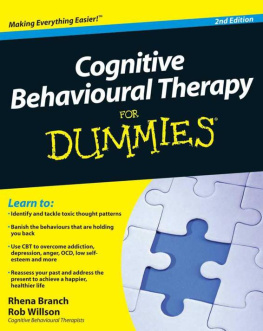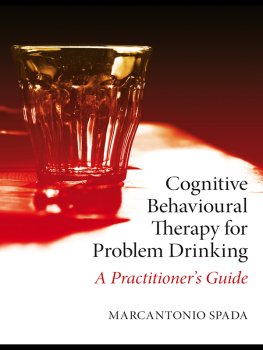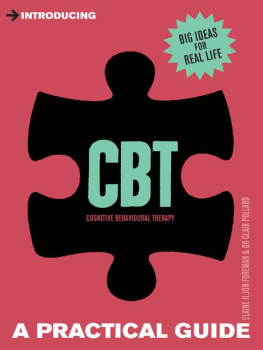Stop Worrying
Stop Worrying
Get your life back on track with CBT
Ad Kerkhof
In collaboration with
Saida Akhnikh, Anneke Koopman, Maarten van der Linde, Marleen Stam & Elvan Tutkun


Open University Press
McGraw-Hill Education
McGraw-Hill House
Shoppenhangers Road
Maidenhead
Berkshire
England
SL6 2QL
email: enquiries@openup.co.uk
world wide web: www.openup.co.uk
and Two Penn Plaza, New York, NY 101212289, USA
Piekeren, First edition, by Ad J. F. M. Kerkhof
Original edition copyright 2007 by Boom uitgevers. All rights reserved
English language of Piekeren by Ad J. F. M. Kerkhof
First edition copyright 2010 by Open University Press. All rights reserved.
English translation copyright Anna George, 2010
All rights reserved. Except for the quotation of short passages for the purposes of criticism and review, no part of this publication may be reproduced, stored in a retrieval system, or transmitted, in any form or by any means, electronic, mechanical, photocopying, recording or otherwise, without the prior written permission of the publisher or a licence from the Copyright Licensing Agency Limited. Details of such licences (for reprographic reproduction) may be obtained from the Copyright Licensing Agency Ltd of Saffron House, 610 Kirby Street, London, EC1N 8TS.
A catalogue record of this book is available from the British Library
ISBN-13: 9780335242528
ISBN-10: 0335242529
Library of Congress Cataloging-in-Publication Data
CIP data applied for
Typeset by RefineCatch Limited, Bungay, Suffolk
Printed in the UK by Bell and Bain Ltd, Glasgow
Fictitious names of companies, products, people, characters and/or data that may be used herein (in case studies or in examples) are not intended to represent any real individual, company, product or event.
Praise for this book
CBT requires a measure of self-discipline that can be hard to muster when youre struggling. The real strength of this book is that its structured day by day programme that tells you exactly what to do when.
This is not just a collection of good ideas but a carefully structured programme that should yield real benefits for anyone who follows it. Professor Kerkhof offers practical exercises using techniques clinically proven to help in the management of anxiety.
This is a wise, practical book full of genuinely useful strategies for dealing with your worries.
Dr Stephen Briers, Clinical psychologist and broadcaster
Its good to see a self-help book which is based on solid, psychological research. Its a book which sets realistic goals, has a down-to-earth approach and is genuinely useful. This book is careful not to promise the earth, but if the exercises are followed carefully some people will find it makes a real difference.
Claudia Hammond, Broadcaster and writer
Very simple and very practical.
Professor Geoff Beattie, University of Manchester and resident Big Brother psychologist
Contents
Part 1
Stop worrying in four weeks
Part 2
Worrying for advanced students
Foreword
Excessive worrying is a burdensome phenomenon which can considerably affect the lives of the people who struggle with it. People with depression or depressive disorders, for example, have to deal with this to a far greater extent than others. In some cases people who worry excessively even go on to develop what may be referred to as a worry disorder which can seriously disrupt their lives. In the United Kingdom around 4.4 per cent of adults suffer from a worry disorder (also referred to as a generalized anxiety disorder). Exactly how many people suffer from excessive worrying is not known precisely but it must be around several hundred thousand a year. There is thus no doubt that this is a very frequently occurring phenomenon.
It is therefore commendable that a book has now appeared for people who suffer from excessive worrying. One of the most positive aspects of this book is that it offers a wide range of exercises that people can do themselves to reduce worrying. People who struggle with worrying can quite satisfactorily tackle worry for themselves. We also know this from a number of scientific studies. This book offers a rich and varied choice of exercises which worriers can do for themselves. If one tackles this seriously, there is a good chance that the worrying will be considerably reduced.
This book has been written by Professor Ad Kerkhof and his colleagues. He is not only a highly valued colleague of mine but also an experienced clinician. Professor Kerkhof has many years experience as a psychotherapist and has used this experience to produce this book. And as you will see, the exercises are easy to do but still structured in an effective and balanced way.
As well as being a clinician, Prof. Kerkhof is also an excellent researcher/academic who well knows what research into the treatment of worrying has produced, as you will see in this book. This book is based on the principles of cognitive behavioural therapy which we know is very effective when dealing with worrying. Moreover, the information is presented in such a way that people can adapt the exercises to their own needs.
All in all, this is an excellent book which I would very much like to recommend to people who want to get to grips with and change their excessive worrying.
Professor Pim Cuijpers
Amsterdam
Autumn 2007
Guidance note
This self-help book contains a number of exercises to do at home. These are exercises which you can also do anywhere, in the car or while doing the shopping. These exercises will slowly but surely help you to worry less. What you will have to do is to set aside a quarter of an hour twice a day in which you commit to do the exercises. This is a time investment which you will quickly recoup as you will spend less time worrying. You should also aim to do the exercises at weekends.
In this book of exercises there are one or more exercises for each day. We advise you to go through this book of exercises step by step and to calmly take the time to try out each exercise. After a while, you will notice which exercises work best for you. And then you can select a number of different exercises. If you find you are at times still worrying after completing this course, then you can of course always continue using the exercises in this book.
Worrying often happens automatically without us necessarily being aware of it. If you concentrate on this activity, you may notice your worrying thoughts may occur more frequently than you were previously aware of. Then it may also seem that at the start you are worrying more. After some time, however, you should notice that you are overtaken by worrying thoughts less frequently.
This exercise book will not solve your problems. You will, however, learn to worry less about your problems. This will free up time for you to work on real solutions.
We wish you every success and perhaps even some fun with the exercises!
Professor Ad Kerkhof Saida Akhnikh Anneke Koopman
Maarten van der Linde Marleen Stam Elvan Tutkun
The Cognitive Behavioural Therapy approach to worrying
Next page




